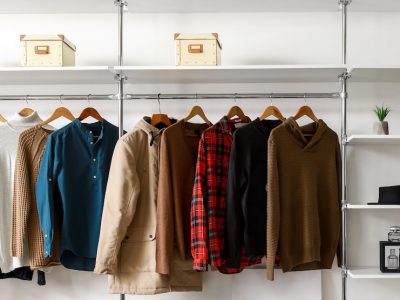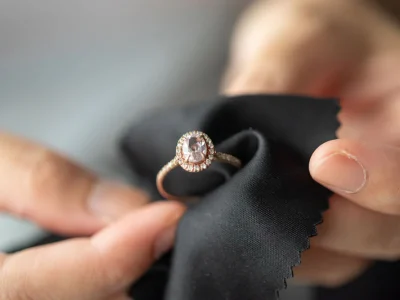Creating a shirt from scratch might seem like a daunting task, but it’s a deeply rewarding project that allows you to customize your wardrobe to your exact specifications. Whether you’re a seasoned sewer looking to challenge yourself or a beginner eager to dip your toes into the world of garment making, this guide will walk you through how to make a shirt step by step. Let’s embark on this creative journey together.
Gathering Your Materials and Tools
Before you can begin the exciting process of making your shirt, it’s imperative to have all your materials and tools at the ready. The choice of fabric is pivotal, as it will define the shirt’s comfort, style, and use. For a breezy daytime shirt, fabrics like cotton, linen, or poplin are excellent choices, offering breathability and ease of care. For something with a touch of elegance, silk or satin might be your go-to, perfect for a dressier occasion.
Once you’ve selected your fabric, the next step is to ensure you have all the necessary sewing equipment. A reliable sewing machine will be your main tool, but the importance of sharp fabric scissors cannot be overstressed for clean cuts. Pins will help keep your fabric in place as you work, and matching thread will ensure that your seams blend seamlessly with your fabric. Don’t overlook the need for a seam ripper; even the most experienced sewers make mistakes, and this handy tool will be your best friend in correcting them.
A measuring tape will assist in taking accurate measurements, which is critical for a well-fitted shirt. An iron is also essential for pressing your fabric before cutting and for achieving crisp seams and finishes as you assemble your shirt.
Lastly, selecting a shirt pattern that fits your style and size is crucial, as it will serve as your blueprint throughout the sewing process. With these materials and tools prepared, you’re well on your way to creating a custom shirt that reflects your personal style and craftsmanship.
Choosing and Preparing Your Pattern
Selecting an appropriate pattern is a pivotal step in the shirt-making process. With an array of patterns available both online and in local fabric stores, finding one that matches your style preference and skill level is key. When you have your pattern in hand, it’s crucial to familiarize yourself with its contents and instructions before diving in. This initial review can clarify any questions or uncertainties you might have and prevent potential issues down the line.
Your next step involves preparing the pattern for use. Most patterns come printed on large sheets of paper that need to be carefully cut out. Do this on a clean, flat surface to ensure accuracy. Pay special attention to the size you’re cutting, ensuring it matches your measurements. If you’re between sizes, it’s generally advisable to opt for the larger size, as it’s easier to take in fabric than to let it out.
Laying out your pattern pieces on the fabric correctly is crucial. This often means aligning certain parts of the pattern with the fabric’s grainline to ensure the finished shirt hangs well and fits comfortably.
Additionally, if your fabric has a pattern or nap, you’ll need to place your pattern pieces in a way that respects the fabric’s directionality. This can impact how much fabric you need, so it’s wise to buy a little extra, just in case.
After laying out your pieces, secure them to the fabric using pins or pattern weights. This prevents shifting as you cut and ensures your pieces are as accurate as possible. Taking the time to properly choose and prepare your pattern sets a solid foundation for the rest of your shirt-making project.
Cutting Your Fabric with Precision
To ensure a smooth start to your shirt-making process, prepare your workspace by spreading the fabric on a clean, spacious area. This step is crucial for maintaining accuracy while cutting. After smoothing out any wrinkles or imperfections, begin pinning the pattern pieces onto the fabric. It’s essential to follow the layout guide closely to optimize fabric usage and adhere to grainline directions, which are vital for the final garment’s fit and drape.
Employ sharp fabric scissors for the cutting process. Their precision will allow you to navigate the contours of your pattern pieces smoothly, making clean cuts that are vital for the next stages of assembly. As you work, carefully remove the pins to avoid any shifts in fabric placement, ensuring each piece maintains its intended shape and size.
Pay particular attention to notches and other marks indicated on the pattern. These serve as guides for aligning pieces later in the sewing process and are indispensable for accurately joining the various parts of your shirt. A precise cut at this juncture will facilitate a more seamless assembly, highlighting the importance of meticulousness in this initial phase.
This careful preparation and cutting set a strong foundation for your shirt, ensuring that the pieces align correctly during assembly, thus contributing to a professional-looking final product.
Piecing Together the Shirt’s Body
With the front and back pieces of your shirt ready, it’s time to join them to form the core of your garment. Position the front and back sections right sides together, aligning them at the shoulder and side seams. Secure them with pins to prevent any shifting during sewing.
Employing a straight stitch, carefully sew along these seams, ensuring to reinforce the start and end of each line of stitching with a backstitch. This step is crucial for the durability of your shirt.
After sewing, the next move is to press the seams. This can either be done by pressing them open or to the side, as dictated by your chosen pattern’s guidelines. Proper pressing is key to achieving a crisp, flat look that enhances the professional quality of your shirt.
The body of the shirt serves as the foundation upon which other elements, such as the collar, cuffs, and sleeves, will be built. Ensuring that these initial seams are sewn accurately and pressed neatly will facilitate smoother progress as you continue to add the remaining pieces. It’s these details that contribute significantly to the overall appearance and fit of your finished shirt. Keep a steady pace and maintain attention to detail during this phase to set a strong groundwork for the subsequent steps in your shirt-making project.
Crafting the Perfect Collar and Cuffs
Crafting the collar and cuffs is a nuanced process that distinguishes a professionally made shirt. Begin by applying interfacing to these parts, following the guidance of your pattern. This step is essential for adding the necessary rigidity and structure that collars and cuffs require. After interfacing, stitch the designated pieces together, paying close attention to the seam allowances specified in your pattern instructions.
Once stitched, carefully trim any excess seam allowance to reduce bulk, then turn the collar and cuffs right side out. Use a point turner or a similar blunt tool to shape the corners sharply without piercing the fabric. This ensures a crisp and clean finish.
Pressing cannot be overstated in its importance. Lay the collar and cuffs flat and press them diligently, ensuring that no creases or wrinkles remain. This step not only enhances their appearance but also facilitates their attachment to the shirt body.
Attaching these elements to the shirt requires precision. Align the collar and cuffs with their respective parts on the shirt body, ensuring the edges match perfectly. Pin them in place, checking for uniformity and symmetry. The sewing here should be done with patience, keeping an eye on maintaining an even seam allowance as dictated by your pattern.
Remember, the quality of your collar and cuffs can significantly impact the overall aesthetic of your shirt. Take your time with each step, from interfacing and sewing to pressing and attaching, to ensure these key features stand out for their craftsmanship.
Adding Buttons and Buttonholes
The addition of buttons and buttonholes is a crucial stage in shirt-making, infusing both functionality and aesthetic appeal to your garment. To embark on this task, it’s essential to familiarize yourself with your sewing machine’s buttonhole feature, if available. Begin by marking the placement of your buttonholes on the shirt, adhering to the spacing guidelines provided by your pattern. These marks typically span from the collar area down to a point just above the shirt’s hem.
Practice creating buttonholes on a scrap piece of the same fabric you’re using for your shirt. This preliminary step allows you to adjust the machine settings and practice the process to ensure neat and uniform buttonholes. Once confident, proceed to carefully make the buttonholes on your shirt at the marked positions.
After completing the buttonholes, the next phase involves attaching the buttons. Position them on the shirt’s front, opposite the buttonholes, taking extra care to ensure they align correctly for seamless closure. Using a needle and thread or your sewing machine (if it has a button-sewing feature), securely attach each button, checking the alignment with its corresponding buttonhole.
Throughout this process, maintain a steady hand and patience. The accuracy of your buttonholes and the secure attachment of your buttons are pivotal for the shirt’s functionality. Ensuring that these components are correctly aligned and neatly executed will contribute significantly to the overall look and wearability of your shirt. This step not only adds the closing mechanism to your shirt but also serves as an opportunity to incorporate unique or decorative buttons that complement your garment’s style.
Hemming for a Professional Look
The hem of your shirt is one of the final steps that significantly influences the garment’s overall aesthetic and durability. Proper hemming can elevate your shirt from homemade to professionally crafted. Start this crucial phase by turning the fabric of the shirt’s bottom edge inward, not once but twice, to effectively conceal the raw edge. This double fold not only secures the raw edges inside, preventing fraying but also ensures a more robust hemline.
Precision at this stage cannot be overstated. Use an iron to firmly press the fold in place, creating a crisp and even line all around the shirt. This step helps in maintaining the fold as you move to pinning. Distribute pins evenly along the hem to keep the fabric from shifting, ensuring that the hem remains even throughout.
When stitching, choose a thread color that matches your shirt for a seamless look. Sewing close to the inner folded edge will offer a neat finish. Whether you’re using a straight stitch or a decorative one, consistency in your stitch length and tension is key to a polished appearance.
If your shirt design includes sleeves, apply the same careful hemming technique to the sleeve edges. This not only unifies the look of your shirt but also reinforces these areas against wear and tear.
Hemming is more than just a necessary step; it’s an opportunity to impart a professional touch to your shirt. The effort put into carefully folding, pressing, pinning, and sewing the hem and sleeves underscores your commitment to quality and attention to detail in your shirt-making project.
Final Touches and Care Tips
Upon completing the assembly of your shirt, the next step involves meticulous inspection and finishing touches to ensure the highest quality. Start by pressing the garment thoroughly with an iron to eliminate any creases and ensure a smooth, crisp finish across all sections, paying extra attention to seams, collars, and cuffs where wrinkles tend to persist. This not only elevates the shirt’s appearance but also highlights the precision of your workmanship.
Next, examine your shirt for any stray threads that may have been overlooked during the construction process. Snipping these threads carefully will contribute to the neatness and professional look of your garment. Such diligence in the final inspection underscores the pride and care taken in your creation.
For maintaining the pristine condition of your handmade shirt, proper care is essential. It is advisable to launder the shirt based on the fabric’s specific requirements. Typically, a gentle wash cycle with a mild detergent is sufficient to clean the shirt without causing undue wear and tear. To preserve the fabric’s integrity and the shirt’s shape, air drying is recommended over machine drying. Should the shirt require ironing after washing, ensure to adjust the iron’s temperature setting according to the fabric type to avoid damage.
Embracing these care tips not only extends the life of your shirt but also maintains its bespoke quality, allowing you to enjoy wearing your handcrafted garment for many occasions to come. Through this process, you refine your sewing skills and grow more adept at garment creation, laying the groundwork for more sophisticated projects in the future.













Comments